Summary Overview
High Intensity Sweeteners Market Overview
The global market for high-intensity sweeteners is expanding steadily, owing to rising demand in a variety of industries including food & drinks, pharmaceuticals, and personal care. This market covers a variety of sweeteners, including artificial, natural, and plant-based solutions, in response to the increased demand for low-calorie, sugar-free, and health-conscious alternatives. Our report provides a detailed analysis of procurement trends within the high-intensity sweeteners industry, focusing on cost-cutting tactics and the use of innovative manufacturing technologies to improve product quality and market competitiveness.
Key future problems include controlling production costs, assuring product quality consistency, preserving supply chain security, and integrating new technology into existing manufacturing processes. Companies are using market information and new sourcing tactics to meet the growing customer demand for healthier options to optimize sweetener production, mitigate supply risks, and enhance operational efficiency.
Market Size: The global High Intensity Sweeteners market is projected to reach USD 5.64 billion by 2035, growing at a CAGR of approximately 5.01% from 2025 to 2035.
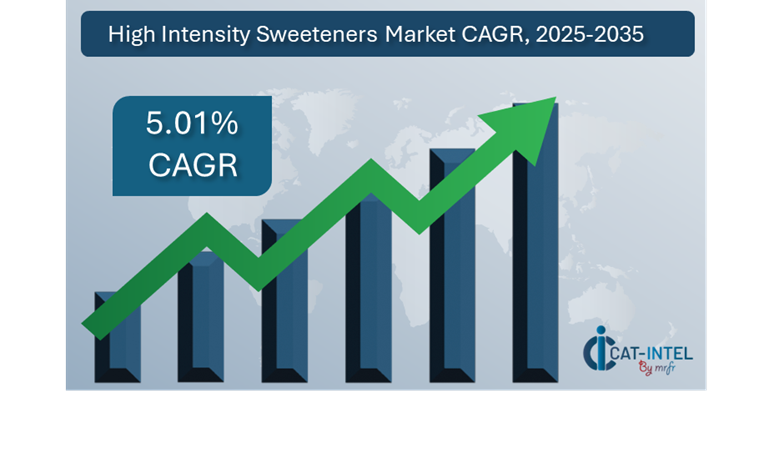
-
Sector Contributions: Growth in the market is driven by: -
Manufacturing and Supply Chain Optimization: The high-intensity sweeteners business is experiencing a growth in need for real-time data and process integration to streamline operations.
-
Retail and E-Commerce Growth: The rise of health-conscious consumers has accelerated the expansion of online retail platforms for sugar-free and low-calorie sweeteners.
-
Technological Transformation: The use of cutting-edge technology such as AI, machine learning, and automation is propelling breakthroughs in sweetener manufacturing processes.
-
Innovations: The industry is seeing the emergence of specialty high-intensity sweeteners that appeal to various dietary choices (for example, vegan, keto-friendly).
-
Investment Initiatives: Businesses are progressively investing in new technology and automation solutions to increase output, reduce energy consumption, and improve sustainability.
-
Regional Insights: North America and Asia Pacific are important contributors to the market because of strong consumer demand, extensive production capabilities, and a growing focus on health-conscious eating habits.
Key Trends and Sustainability Outlook:
-
Cloud Integration: Cloud-based technologies enable better data management, scalability, and easier access to production data, which is critical for sweetener manufacturers to satisfy demand efficiently.
-
Advanced Features: With the integration of IoT and advanced analytics, high-intensity sweeteners are becoming more sophisticated in terms of product quality, supply chain optimization, and consumer interaction.
-
Focus on Sustainability: The sweeteners sector is putting more attention on sustainable sourcing, managing resources, and environmentally friendly production methods to assist satisfy regulatory obligations.
-
Customization Trends: With plant-based and low-calorie sweeteners, producers are providing increasingly specialized solutions to certain market segments, such as diabetics, vegans, and weight-conscious customers.
-
Data-driven Insights: Businesses are increasingly relying on analytics to estimate demand, improve production schedules, and track customer preferences.
Growth Drivers:
-
Digital Transformation: The growing use of digital tools in the food and beverage industry is boosting the need for high-intensity sweeteners.
-
Demand for Process Automation: Automation in manufacturing procedures is helping to decrease operational bottlenecks while increasing production speed and consistency.
-
Scalability Requirements: As global demand for low-calorie and sugar-free products grows, businesses are seeking scalable production solutions that can match rising quantities without sacrificing quality.
-
Regulatory Compliance: As food safety and sugar alternatives laws tighten, makers of high-intensity sweeteners are turning to innovative software.
-
Globalization: As global demand for sugar substitutes grows, producers are looking for ways to accommodate multinational operations.
Overview of Market Intelligence Services for the High Intensity Sweeteners Market:
Recent evaluations of the high-intensity sweeteners market have found important obstacles, including high production costs and the need for product innovation and customisation. Market intelligence reports offer significant insights into procurement opportunities, assisting organizations in identifying cost-cutting initiatives, optimizing supplier management, and improving overall production success. These insights are critical for adhering to industry rules, maintaining high quality standards, and successfully controlling costs, all while fulfilling the growing demand for healthier, low-calorie sweeteners.
Procurement Intelligence for High Intensity Sweeteners: Category Management and Strategic Sourcing
Businesses are refining their procurement processes to remain competitive in the high-intensity sweetener market, including rigorous spend monitoring and supplier performance tracking. Effective category management and strategic sourcing are critical in lowering procurement costs and ensuring a consistent supply of raw materials, such as natural sweetener extracts and specialized manufacture. Companies that use actionable market knowledge can improve their sourcing strategy, negotiate favourable contracts with suppliers, and source high-quality sweeteners to fulfil various consumer preferences.
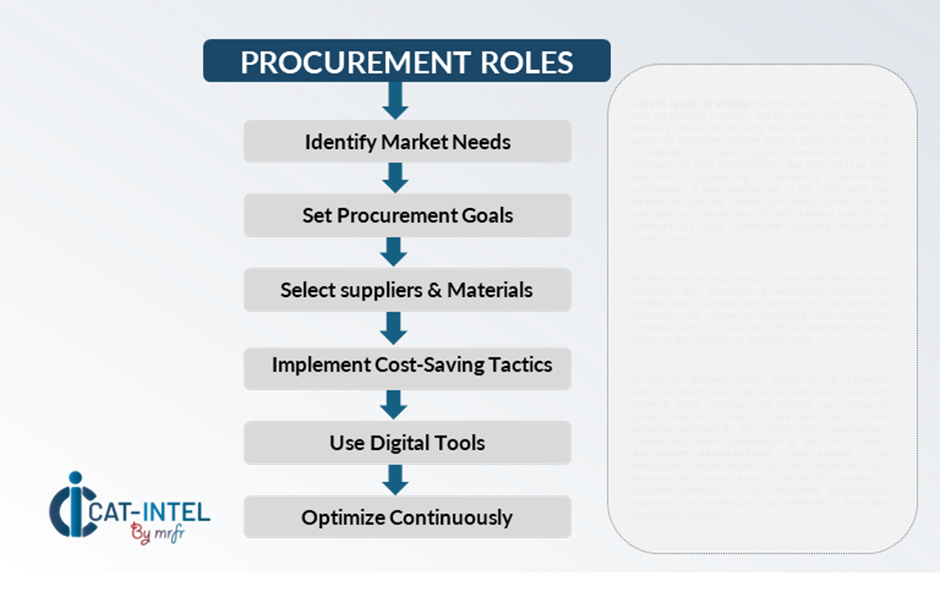
Pricing Outlook for High Intensity Sweeteners: Spend Analysis
The pricing outlook for the high-intensity sweeteners market is projected to remain moderately dynamic, with potential fluctuations influenced by a variety of reasons. Production technology developments, rising desire for natural and plant-based alternatives, the need for customization to match various consumer preferences, and regional pricing variances are all key factors. Furthermore, the increased use of modern technologies such as AI, automation, and real-time data analytics, combined with a greater emphasis on sustainability and regulatory compliance, is putting upward pressure on the price of high-intensity sweeteners.
Graph shows general upward trend pricing for High Intensity Sweeteners and growing demand. However, there may be fluctuations influenced by economic conditions, technological advancements, and competitive dynamic.
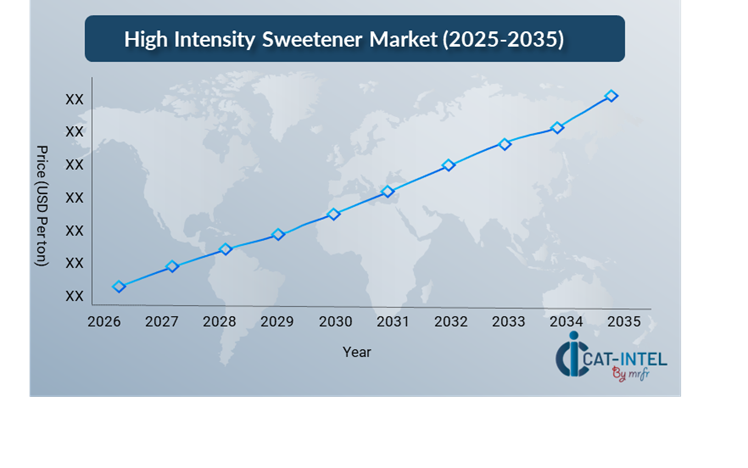
Efforts to optimize procurement procedures, improve supplier management, and implement flexible manufacturing solutions are critical for cost reduction in the high-intensity sweeteners industry. Using digital technologies for market monitoring, price forecasting using advanced analytics, and efficient contract administration can considerably improve cost efficiency.
Strategic alliances with dependable raw material suppliers, long-term contract negotiations, and the exploration of alternative sourcing methods are all important cost-cutting strategies. Regardless of these hurdles, focusing on scalability, assuring consistent product quality, and using novel manufacturing technologies will be crucial to the industry's cost-effectiveness and operational excellence.
Cost Breakdown for High Intensity Sweeteners: Total Cost of Ownership (TCO) and Cost-Saving Opportunities
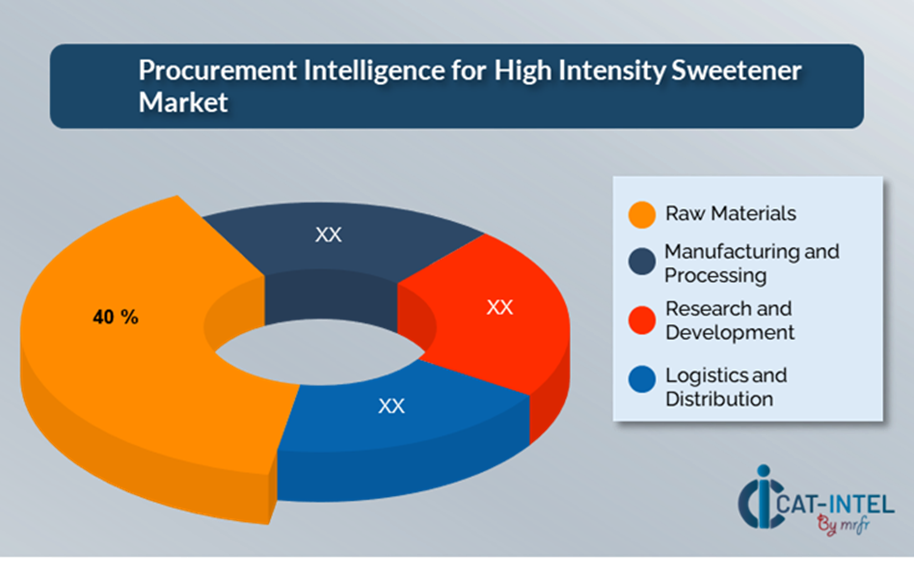
- Raw Material: (40%)
-
Description: Raw ingredients, such as stevia, monk fruit, and erythritol, account for most of the cost of high-intensity sweeteners. The price variations of these natural constituents, together with the expenditures of cultivation and extraction, have a substantial impact on the entire cost.
-
Trend: Companies are increasingly focusing on optimizing their sourcing strategies by investing in sustainable and trustworthy raw material sources
- Manufacturing and Processing: (XX%)
- Research and Development: (XX%)
- Logistics and Distribution: (XX%)
Cost-Saving Opportunities: Negotiation Levers and Purchasing Negotiation Strategies
In the high-intensity sweeteners sector, streamlining procurement procedures and using strategic sourcing strategies can result in considerable cost savings and improved operational efficiency. Long-term arrangements with dependable raw material suppliers, particularly those that provide sustainable, natural, or plant-based alternatives, might result in more attractive price structures and terms, such as volume discounts and bundled service packages. Long-term contracts and subscription-based pricing models provide chances to achieve reduced rates while mitigating price swings over time.Collaborating with suppliers who value innovation and scalability provides additional benefits, such as access to sophisticated manufacturing technology, data analytics, and ethical purchasing practices. This not only helps to reduce long-term production costs, but it also coincides with changing customer expectations for healthy, environmentally friendly sweeteners. Implementing digital procurement solutions, such as supplier management systems and real-time usage statistics, improves transparency, reduces outsourcing, and streamlines production processes. Diversifying supplier options and implementing a multi-supplier approach can help to reduce reliance on a single source, manage risks like supply chain disruptions, and increase negotiation leverage
Supply and Demand Overview for High Intensity Sweeteners: Demand-Supply Dynamics and Buyer Intelligence for Effective Supplier Relationship Management (SRM)
The market for high-intensity sweeteners is expanding steadily, owing to rising consumer demand for healthier, lower-calorie options and technological breakthroughs in production. Technological breakthroughs, industry-specific requirements, and evolving global consumer patterns all have an impact on supply and demand dynamics.
Demand Factors:
-
Health & Wellness trends: The increased preference for healthy, sugar-free products is pushing up demand for high-intensity sweeteners in industries such as food and beverage, medicines, and personal care.
-
Shift Toward Natural and Plant-Based Alternatives: As customers become more health-conscious, the demand for natural sweeteners like as stevia and monk fruit grows, resulting in a greater emphasis on sustainable and environmentally friendly production.
-
Customization Requirements: Different industries, including as drinks, confectionery, and dairy, require sweeteners that are suited to their specific formulas and manufacturing methods, increasing demand for specialized goods.
-
Functional and Sensory Integration: Market trends are being influenced by the growing desire for sweeteners that blend in seamlessly with other ingredients and have a more natural taste.
Supply Factors:
-
Technological Advancements: Sweetener manufacturing innovations, including as fermentation techniques and biotechnology approaches, are improving product options and increasing supplier competitiveness.
-
Vendor Ecosystem: An increasing number of suppliers, including large-scale manufacturers as well as niche, specialist producers, are providing purchasers with a varied range of options in the high-intensity sweetener industry.
-
Global Economic Factors: Raw material availability, labour costs, and regional consumption trends all have an impact on sweetener prices and supply chain dynamics.
-
Scalability and Flexibility: Modern sweetener manufacturing processes are becoming more modular, enabling suppliers to serve organizations of varied sizes and complexity.
Regional Demand-Supply Outlook: High Intensity Sweeteners
The Image shows growing demand for High Intensity Sweeteners in both North America and Asia Pacific, with potential price increases and increased Competition.
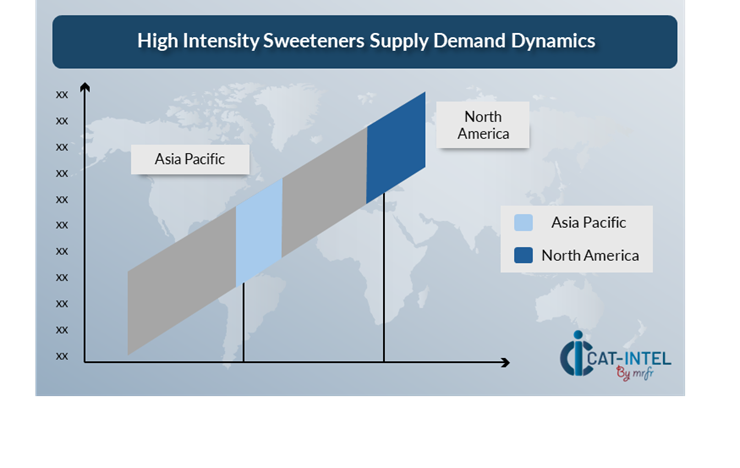
North America: Dominance in the High Intensity Sweeteners Market
North America, particularly the United States, is a dominant force in the global High Intensity Sweeteners market due to several key factors:
-
High Consumer Demand: As people become more health-conscious, there is a higher demand for high-intensity sweeteners like stevia, monk fruit, and erythritol in foods, beverages, and nutritional supplements.
-
Established Food and Beverage Industry: North America, particularly the United States, has a huge, well-established food and beverage business that uses a lot of high-intensity sweets.
-
Supportive Regulatory Environment: The regulatory landscape in North America, particularly through authorities such as the US Food and Drug Administration (FDA) and Health Canada, has been favourable to high-intensity sweeteners.
-
Advanced Research and Development: Companies in the region make significant investments in research and development to create novel, better-tasting, and more cost-effective sweeteners. North America's emphasis on innovation has propelled it to the forefront of the worldwide market for sweetener alternatives.
-
Access to Key Suppliers and Manufacturers: The region is home to many among the world's largest producers of high-intensity sweeteners, including Cargill, Tate & Lyle, and Ingredion. These significant suppliers offer a diverse selection of sweeteners, assuring a steady supply to fulfil both domestic and global demands.
North America Remains a key hub High Intensity Sweeteners Price Drivers Innovation and Growth.
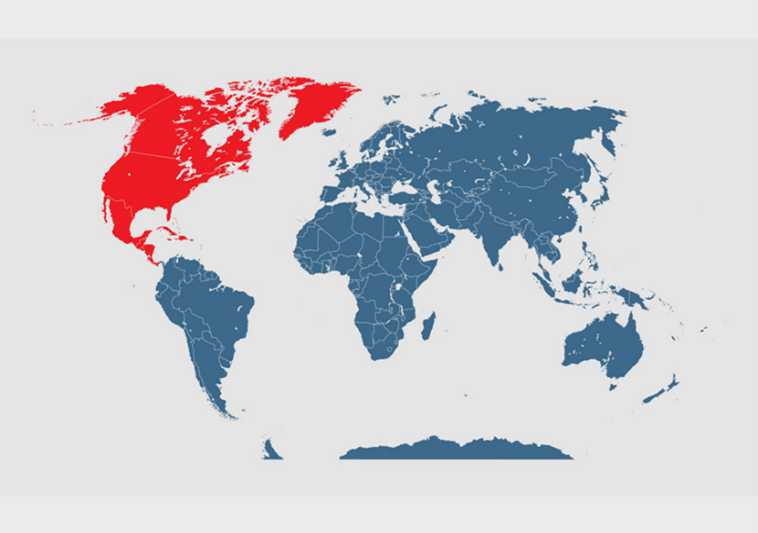
Supplier Landscape: Supplier Negotiations and Strategies
The high-intensity sweeteners market has a broad and competitive supplier ecosystem, with a mix of global and regional players influencing industry dynamics. These vendors have a significant impact on variables including price strategy, product innovation, and supply chain efficiency. Large, established corporations dominate the market, producing a wide range of sweeteners, while smaller, specialized players target certain customer niches or provide unique formulations, such as plant-based or organically derived sweeteners.
The high-intensity sweeteners market's supplier ecosystem includes both well-known worldwide manufacturers and innovative regional businesses who cater to industry-specific needs, such as those in the beverage, dairy, and confectionery industries. As demand for healthier, sugar-free alternatives grows, sweetener manufacturers are improving production techniques, incorporating new technologies (such as fermentation and enzymatic processes), and providing more flexible product options to meet the changing needs of manufacturers and consumers.
Key Suppliers in the High Intensity Sweeteners Market Include:
- Cargill
- Tate & Lyle
- Ingredion
- Ajinomoto Co., Inc.
- SteviaFirst Corporation
- PureCircle
- DSM
- Archer Daniels Midland Company
- Gelita AG
- Merisant
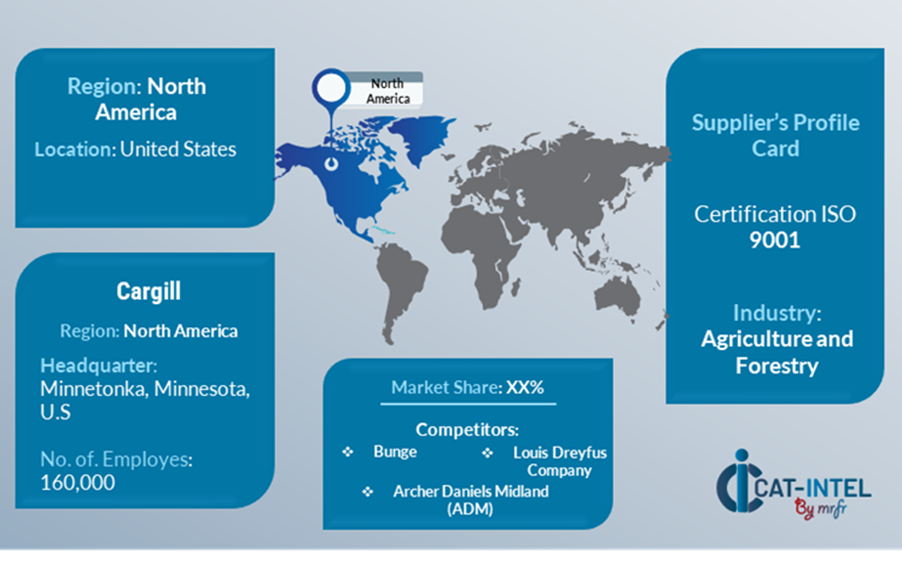
Key Developments Procurement Category Significant Development:
Significant Development |
Description |
Market Growth |
The high-intensity sweeteners industry is expanding rapidly, driven by rising consumer demand for healthier, sugar-free, and low-calorie alternatives. |
Cloud Adoption |
Cloud-based solutions enable real-time data access, improve collaboration, and allow for faster adaptability to changing market dynamics, particularly in regions with hybrid work arrangements and shifting customer needs. |
Product Innovation |
Companies are increasing their product offerings to include plant-based, natural, and multifunctional sweeteners, utilizing technologies such as fermentation and enzyme technology to improve taste profiles, lower prices, and provide clearer labels.
|
Technological Advancements |
AI improves product development by offering real-time insights regarding flavor profiles, customer preferences, and market trends, whilst RPA helps to automate manufacturing operations, lowering operational costs and increasing productivity. |
Global Trade Dynamics |
Trade agreements and taxes on raw materials influence pricing and supply chain decisions, particularly for important constituents such as stevia and monk fruit, which are frequently obtained from specific regions. |
Customization Trends |
Manufacturers are creating sweeteners with industry-specific applications, such as low-calorie choices for the beverage industry or keto-friendly sweeteners for consumers with health concerns. Customization enables firms to easily include sweeteners into their product lines whilst catering to the specific needs of their target audience.
|
|
High Intensity Sweeteners Attribute/Metric |
Details |
Market Sizing |
The global High Intensity Sweeteners market is projected to reach USD 5.64 billion by 2035, growing at a CAGR of approximately 5.01% from 2025 to 2035. |
High Intensity Sweeteners Technology Adoption Rate |
Around 60% of worldwide food and beverage industries use high-intensity sweeteners, with a noticeable shift toward natural and plant-based alternatives including stevia, monk fruit, and erythritol for healthier formulations. |
Top High Intensity Sweeteners Industry Strategies for 2025 |
Key goals include prioritizing sustainability through eco-friendly production processes, changing product formulations to meet health-conscious customer needs, expanding into emerging markets, and promoting transparency in sourcing and labelling. |
High Intensity Sweeteners Process Automation |
To improve productivity and save operational costs, about half of high-intensity sweetener makers are automating routine production operations such as blending, quality control, and packing. |
High Intensity Sweeteners Process Challenges |
Major problems include fluctuating raw material costs, regulatory compliance issues, maintaining product uniformity, and expanding production to meet rising demand while adhering to sustainability principles.
|
Key Suppliers |
Cargill, Tate & Lyle, and Ingredion are among the leading makers of high-intensity sweeteners, supplying a wide range of sweeteners for several industries including food and beverage, pharmaceuticals and personal care. |
Key Regions Covered |
North America, Europe, and Asia-Pacific are major markets for high-intensity sweetener adoption, with strong demand in the beverage, confectionery, and dairy industries. |
Market Drivers and Trends |
Growth is being driven by expanding demand for sugar substitutes, rising consumer desire for low-calorie and sugar-free options, advancements in sweetener formulations, and a growing emphasis on sustainability and clean-label products. |

